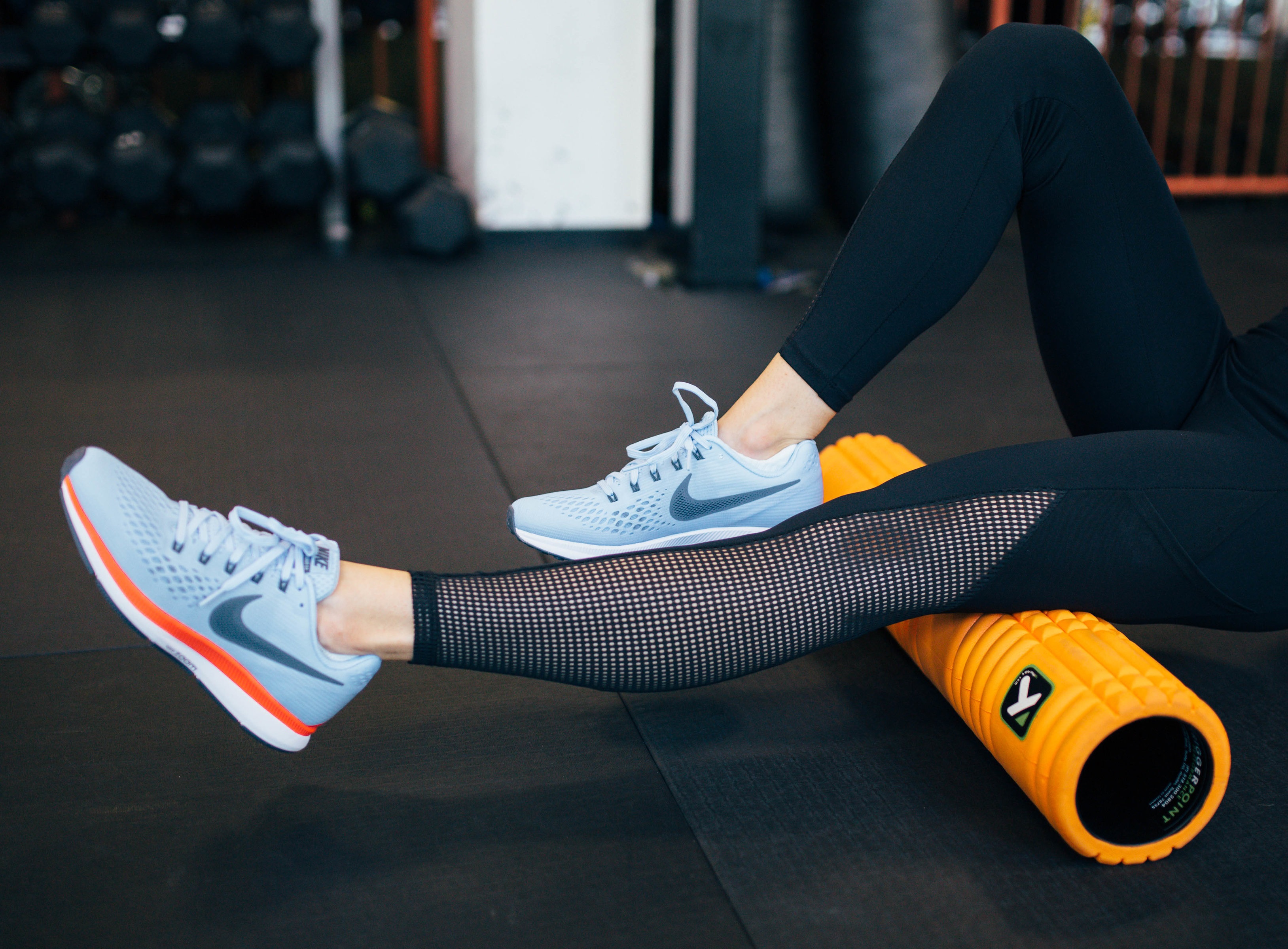Ok were switching gears and talking fitness today! I just ran the Napa to Sonoma Half Marathon followed by the Giant Race Half Marathon a few weekends ago which was a total blast. Standard Jenna, I left training to the last minute and ran a ton of miles the last 2 weeks before the race. With all of the training and extra stress on the body its SUPER important to stretch, get a massage and FOAM ROLL.
While necessary to work hard during your workouts, it’s equally as important to make sure your body gets the recovery it needs. And while getting a massage every once in a while is a great way to treat yourself and soothe sore muscles, foam rolling is a much more time efficient way to recover on a daily basis.
Foam roller exercises, also called myofascial release, is a form of massage that you can do either before exercise to loosen up sore muscles and tight joints, or after a workout, in an effort to help with muscle recovery. I strongly believe foam rolling is ESSENTIAL after excess training, especially during half or full marathon training (or just everyday exercise!)

OUTFIT DETAILS: SPORTS BRA / LEGGINGS / SNEAKERS

WHY YOU NEED TO USE A FOAM ROLLER:
Reduce soreness
Foam rolling works by massaging away fascia buildup in your muscles, which often lead to painful, sore muscles. Reducing this means you won’t have to skip your workout because you’re too sore from the previous day’s session. I like to foam roll right after a workout but the day after will do as well!
Increase mobility and flexibility
Taking proper care of underlying fascia is a secret weapon to improving mobility, flexibility, and range of motion. There are so many different ways to stretch, but I love using a foam roller to release tension and increase flexibility.
Helps De-stress
Foam rolling is basically a self massage. I usually get monthly deep tissue massages to help release tension and de-stress but this is a much more affordable way! When you release your knots and sore spots, the tension built up in your connective tissue releases and leaves you feeling less stressed.
A few tips that are important to consider:
Avoid foam rolling directly on an injured area. When it comes to foam rolling and myofascial release, constantly working the area of pain could create more inflammation and tension in the area, further tensing the muscles and fascia. Also, where you feel the pain is not always the source of the injury. Instead focus on the muscles attached to the area that injured- they could be the culprit.
Foam rolling hurts, and when I come to an area that is uncomfortable I tend to speed up. However foam rolling quickly doesnt help release fascia. Releasing fascia takes time, so slow your roll. 🙂
Foam rolling is a lot of work and I sometimes break a sweat. Although its easy to let our form deteriorate especially after a hard workout, its important to keep good form and posture. Your pelvis might drop from not having tight abs when doing quad work or your hips my sag while working the IT band. This can cause extra stress on existing injuries, so make sure you have enough energy to focus on posture.
I’m not going to lie….it hurts, but it is worth it, so hang in there, and notice how much better you feel when foam rolling becomes a consistent part of your recovery plan.
SHOP THE POST:

